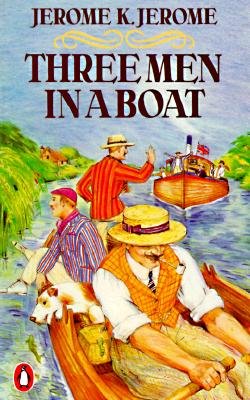Wallingford, six miles above Streatley, is a very ancient town, and has been an active centre for the making of English history. It was a rude, mud-built town in the time of the Britons, who squatted there, until the Roman legions evicted them; and replaced their clay-baked walls by mighty fortifications, the trace of which Time has not yet succeeded in sweeping away, so well those old-world masons knew how to build.
But Time, though he halted at Roman walls, soon crumbled Romans to dust; and on the ground, in later years, fought savage Saxons and huge Danes, until the Normans came.
It was a walled and fortified town up to the time of the Parliamentary War, when it suffered a long and bitter siege from Fairfax. It fell at last, and then the walls were razed.
From Wallingford up to Dorchester the neighbourhood of the river grows more hilly, varied, and picturesque. Dorchester stands half a mile from the river. It can be reached by paddling up the Thame, if you have a small boat; but the best way is to leave the river at Day’s Lock, and take a walk across the fields. Dorchester is a delightfully peaceful old place, nestling in stillness and silence and drowsiness.
Dorchester, like Wallingford, was a city in ancient British times; it was then called Caer Doren, “the city on the water.â€Â In more recent times the Romans formed a great camp here, the fortifications surrounding which now seem like low, even hills. In Saxon days it was the capital of Wessex. It is very old, and it was very strong and great once. Now it sits aside from the stirring world, and nods and dreams.
Round Clifton Hampden, itself a wonderfully pretty village, old-fashioned, peaceful, and dainty with flowers, the river scenery is rich and beautiful. If you stay the night on land at Clifton, you cannot do better than put up at the “Barley Mow.â€Â It is, without exception, I should say, the quaintest, most old-world inn up the river. It stands on the right of the bridge, quite away from the village. Its low-pitched gables and thatched roof and latticed windows give it quite a story-book appearance, while inside it is even still more once-upon-a-timeyfied.
It would not be a good place for the heroine of a modern novel to stay at. The heroine of a modern novel is always “divinely tall,†and she is ever “drawing herself up to her full height.â€Â At the “Barley Mow†she would bump her head against the ceiling each time she did this.

